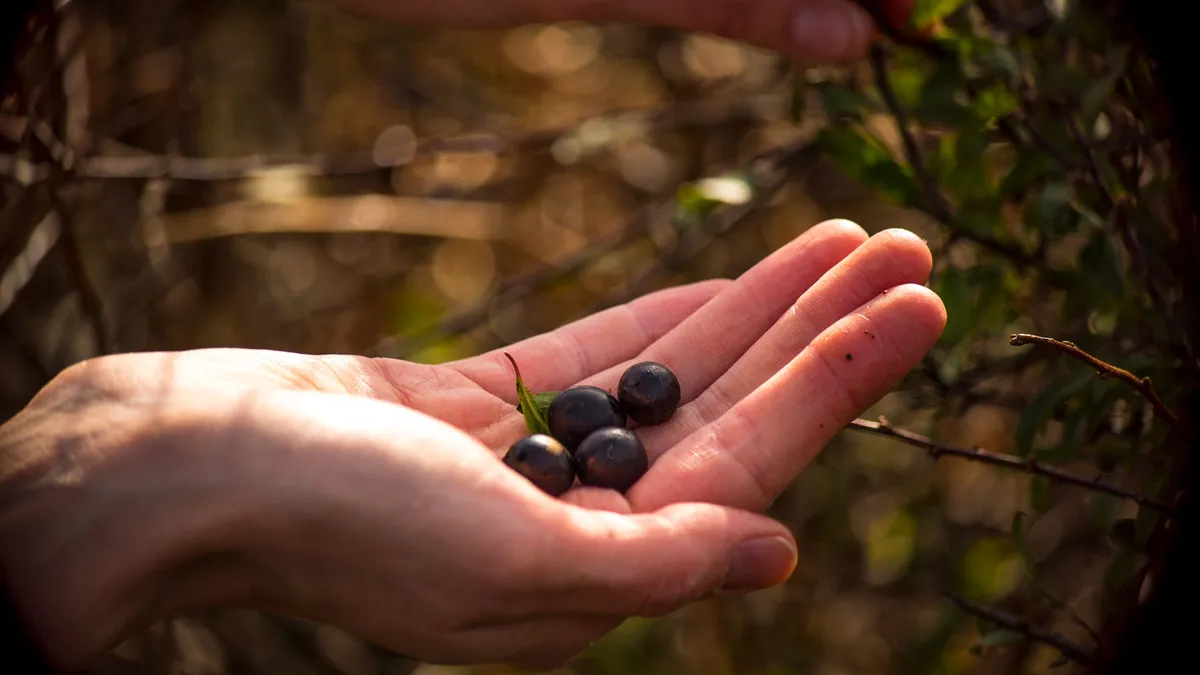From foraging the berries to bottling the liqueur, sloe gin is one of the most rewarding and special drinks you can make.
It's versatile too: use it in cocktails such as sloe gin fizz, sloe gin collins or even just with a few cubes of ice, topped up with good quality tonic water. With a little preparation, and a lot of patience, sloes – which are packed with bitter astringents when eaten raw (so don't!) – will transform a plain old bottle of gin into a deeply delicious liqueur.
Making sloe gin is very much a case of life in the sloe lane. It can require quite a bit of patience but is extremely rewarding - read on for the perfect sloe gin recipe. Or as a little twist you can easily make sloe vodka by replacing the gin with vodka.
What are sloes?
Sloes are the fruit of the blackthorn. A densely growing bush, packed with thorns, it’s often used in hedgerows to keep livestock in check. It’s a member of the prunus family, and like its more glamorous relatives, it’s dressed in white blossom throughout spring. This pretty display, combined with its overall hardiness, means that it features in many a suburban parkland.
- September foraging guide: best foods to find and recipe ideas
- The best foraging gifts in 2023
- Best foraging courses in the UK
The sloes themselves are spherical and cluster tightly along the branches. If the berries you have found are oval and dropping from stems, they are probably damsons. Pick the sloes that have ripened in the sunshine, as these will be sweeter than those in the shade. Always pick from waist height upwards – this will leave plenty on the bushes for the wildlife and means you will collect the cleanest berries.

When should sloes be picked?
There’s a bit of folklore about only collecting sloes after the first frost, during which time the skins had naturally split.
However, there’s no need to wait this long. Early autumn is not only a more pleasant time to be out and about, but you can time your sloe harvest to the last of blackberries, meaning that you can have some instant gratification foraging along the way. You can also pick sloes as early as September and simply pop them in the freezer to achieve the same effect.
How do you drink sloe gin?
Sloe gin can be drunk on its own – you may find a spirit measure handy – and severed on ice. It is also delicious served with a mixer such as tonic water and ice cubes with a slice of lemon or orange. Try adding it to sparkling wine to make sloe gin fizz, or try a sloe gin collins: simply mix it with equal parts lemon juice and serve over ice, topped up with soda water. Experiment and discover exciting new combinations: in any recipe that incorporates gin, try using sloe gin instead.
How long does sloe gin last?
Provided your sloe gin is kept in an air-tight sealed bottle in a cool, dark spot then it should last approximately one year after opening.
How do you make sloe gin?
Follow our method below to make the perfect sloe gin to enjoy over the winter months or as a festive tipple.

